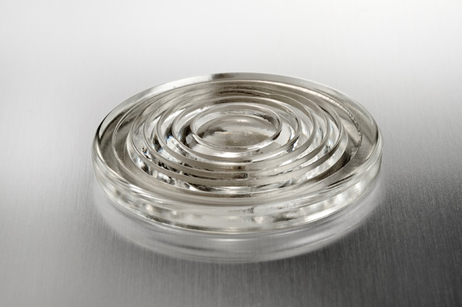FecosLED has accomplished extensive lens material testing in this month. Until recently, PMMA (acrylic) and PC (polycarbonate)-lenses were the most frequently used lens types within the LED-industry. One key advantage of both, PMMA and PC, is their relatively easy manufacturing through injection moulding and low material cost. At a thickness of 3 mm, PMMA has a light penetration rate of 93% whilst PC has only a slightly lower transmittance rate of 89%. These rates proved to be sufficient until now for most LED-lighting commonly available on the market.
PMMA and PC solutions however require a careful selection of the raw material. Cheap raw material will reduce transmittance rates, beam angle accuracy and heat resistance of the lens. Recent developments within the LED-industry, such as the Oslon Square LED of Osram, indicate an ever increased heat resistance of LEDs which will inevitably have its impact onto the design of LED-lenses.
Optical glass lenses are an option to match with such challenges. Optical glass has a transmittance rate of 97% and hence exceeds the rates of PMMA and PC clearly. Moreover, optical glass has a much higher heat resistance than PMMA and PC which allows the application of newest high-temperature LED-technologies. Nonetheless the application of glass lenses to LEDs is still in its development and more cost-efficient solutions for the mass production have to be found.
In this month, FecosLED has undertaken further measurements of glass lenses, particularly for the application within high-Wattage lamps. Additionally optical glass-reflectors have been tested, another promising module for LED light sources. The results have been more than satisfactory and offer totally new options of product choice for our customers. md.


